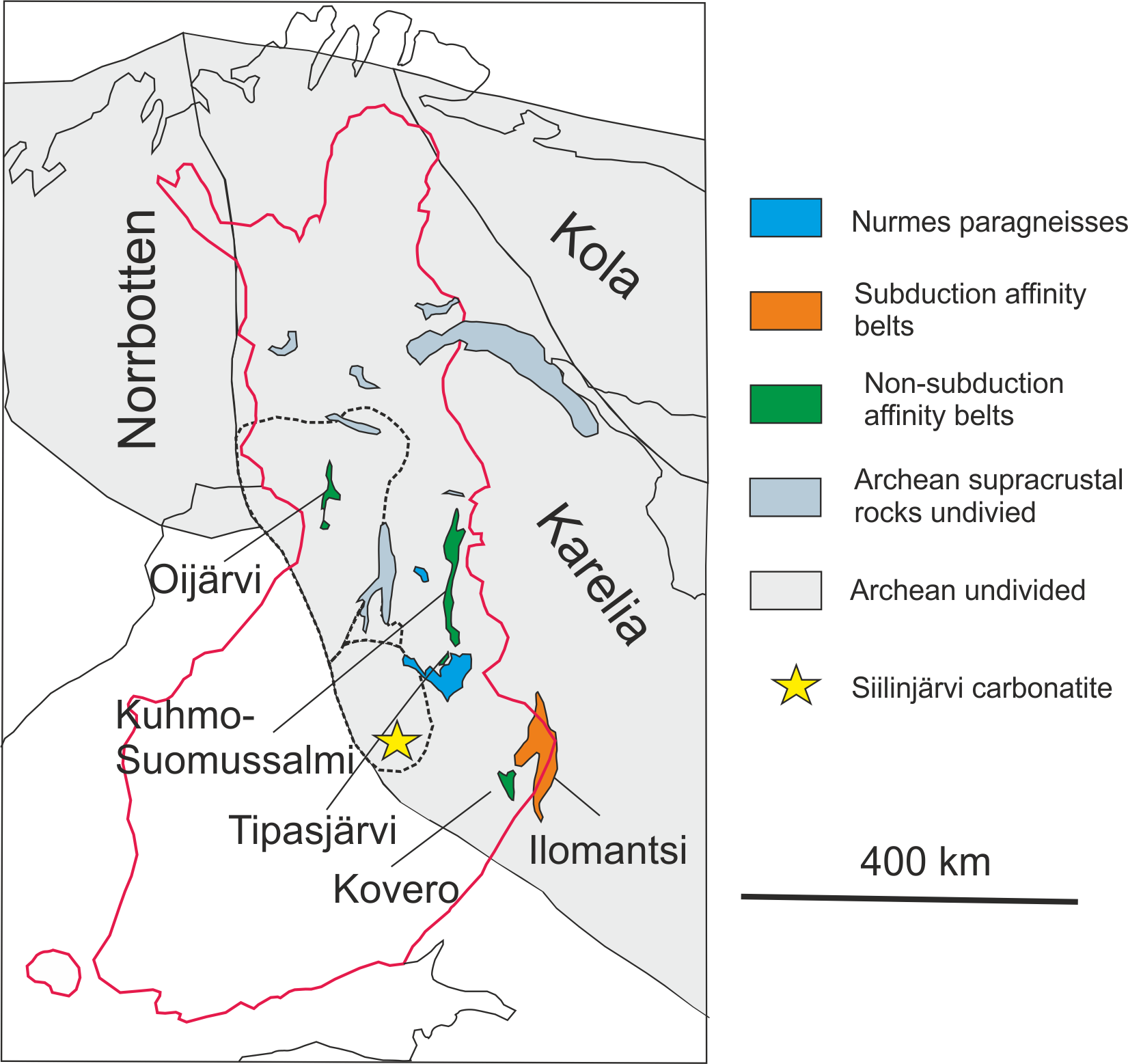Archean in Finland comprises typically the Meso to Neoarchaean TTG-greenstone provinces with earliest rock ages at 3.6 Ga. The Oijärvi, Tipasjärvi, Kuhmo-Suomussalmi and Kovero greenstone belts (2.86-2.79 Ga) have non-subduction affinity with oceanic plateau type komatiites and basalts whereas the Ilomantsi greenstone belt (2.75-2.73 Ga) is characterized by island arc rocks (Fig. 1). Nurmes paragneiss, deposited <2.72 Ga, is greywacke-dominated sedimentary unit with MORB-affinity volcanic rocks. Other undivided supracrustal belts have variable sedimentary and volcanic rocks of unknown affinity.
The TTGs have a large age span from c. 3.50 to 2.73 Ga with dominant ages between 2.83 Ga and 2.72 Ga. Sanukitoid-like granitoids have ages at 2.74-2.72 Ga, subsequent quartz diorite-quartz monzodiorite group ages at ca. 2.70 Ga and youngest crustal-derived granites at c. 2.71-2.66 Ga.
Greenstone belts are shallow (< 2-5 km) and possibly rootless with unknown basement. Greenstone belts are typically tightly and upright folded whereas higher grade areas are often sub-horizontally deformed.
Evidences for older “orogenies” are seen in sparse older metamorphic ages but main upper amphibolite facies to granulite facies metamorphic peak occurred at 2.70-2.62 Ga. Accretion of exotic terranes at c. 2.83–2.75 Ga was followed by collisional crustal stacking at around 2.73–2.68 Ga, which is linked with the assembly of the Neoarchaean supercontinent Kenorland. Orogenic gold deposits of this time are abundant in the Karelian domain in eastern Finland, as in similar greenstone terrains elsewhere, but the large orogenic gold detected in many other Archean cratons are still missing.
The Siilinjärvi carbonite (2.61 Ga) intruded to brittle bedrock and is considered to represent the termination of orogenic activity in the Archean of Finland.
(Last update: 20.05.2020
